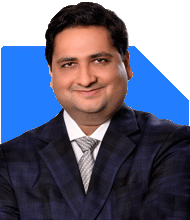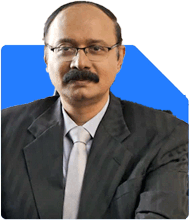Hardik Parikh | Answer |Ask -Follow
Tax, Mutual Fund Expert - Answered on Aug 22, 2023
He also holds an MBA degree from IIM-Indore.
Hardik, who began his career as an equity research analyst, founded his own advisory firm, Hardik Parikh Associates LLP, which provides a variety of financial services to clients.
He is committed to sharing his knowledge and helping others learn more about finance. He also speaks about valuation at different forums, such as study groups of the Western India Regional Council of Chartered Accountants.... more

I work for a private company with annual CTC of Rs 17.6 lakh, What are the investments which I must do in order to save the tax, Currently I have 4 Life Insurance policies with premium Rs 1 lakh Senior Citizen health insurance of Rs 25k I have a 3 year old daughter, this year I m planning for Sukhanya Samruddhi of Rs 1.5 lakh
Given your annual CTC of Rs 17.6 lakh and your current investments, here are some tax-saving investment options you can consider for the financial year 2023-24:
1. Equity Linked Savings Scheme (ELSS): This is a type of mutual fund that not only helps you save tax but also gives you an opportunity to grow your money. They have a lock-in period of 3 years.
2. Public Provident Fund (PPF): You've mentioned planning for Sukanya Samriddhi for your daughter, which is a great choice. In addition to that, you can also consider investing in PPF. It's a long-term investment option that offers tax-free interest.
3. Unit Linked Insurance Plan (ULIP): Since you already have life insurance policies, you might want to look into ULIPs. They offer both insurance and investment under a single integrated plan.
4. National Savings Certificate: This is another safe investment option that you can consider.
5. New Pension Scheme (NPS): It's a voluntary, long-term retirement savings scheme designed to enable systematic savings. It is a mix of equity, fixed deposits, corporate bonds, liquid funds, and government funds.
6. Fixed Deposits: Some fixed deposits offer tax-saving benefits. However, the interest earned might be taxable.
7. Senior Citizen Saving Scheme (SCSS): Since you've mentioned senior citizen health insurance, if you or your family members qualify, SCSS can be a good option. It offers a good interest rate.
Remember, the key is to diversify your investments and not put all your money into one basket. It's also essential to keep in mind the lock-in periods, returns, and tax implications of each investment option.
I hope this helps!
You may like to see similar questions and answers below
Reetika Sharma |417 Answers |Ask -Follow
Financial Planner, MF and Insurance Expert - Answered on Sep 17, 2025
Ramalingam Kalirajan |10870 Answers |Ask -Follow
Mutual Funds, Financial Planning Expert - Answered on Jul 22, 2024
T S Khurana |536 Answers |Ask -Follow
Tax Expert - Answered on Aug 10, 2024
Purshotam Lal | Answer |Ask -Follow
Financial Planner, MF and Insurance Expert - Answered on Sep 24, 2025
Dr Dipankar Dutta |1836 Answers |Ask -Follow
Tech Careers and Skill Development Expert - Answered on Dec 05, 2025
Ulhas Joshi |280 Answers |Ask -Follow
Mutual Fund Expert - Answered on Dec 05, 2025
Dr Dipankar Dutta |1836 Answers |Ask -Follow
Tech Careers and Skill Development Expert - Answered on Dec 04, 2025
Ravi Mittal |676 Answers |Ask -Follow
Dating, Relationships Expert - Answered on Dec 04, 2025
Anu Krishna |1745 Answers |Ask -Follow
Relationships Expert, Mind Coach - Answered on Dec 04, 2025
Anu Krishna |1745 Answers |Ask -Follow
Relationships Expert, Mind Coach - Answered on Dec 04, 2025
Mayank Chandel |2562 Answers |Ask -Follow
IIT-JEE, NEET-UG, SAT, CLAT, CA, CS Exam Expert - Answered on Dec 04, 2025
Mayank Chandel |2562 Answers |Ask -Follow
IIT-JEE, NEET-UG, SAT, CLAT, CA, CS Exam Expert - Answered on Dec 04, 2025
Mayank Chandel |2562 Answers |Ask -Follow
IIT-JEE, NEET-UG, SAT, CLAT, CA, CS Exam Expert - Answered on Dec 04, 2025
Mayank Chandel |2562 Answers |Ask -Follow
IIT-JEE, NEET-UG, SAT, CLAT, CA, CS Exam Expert - Answered on Dec 04, 2025






























